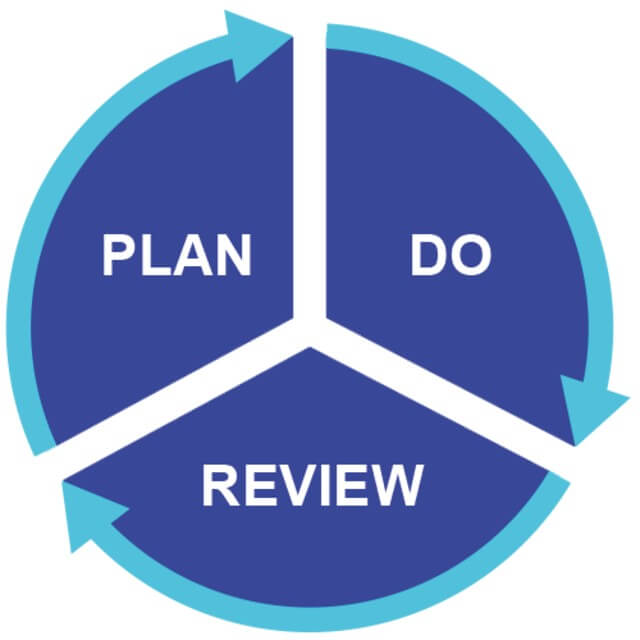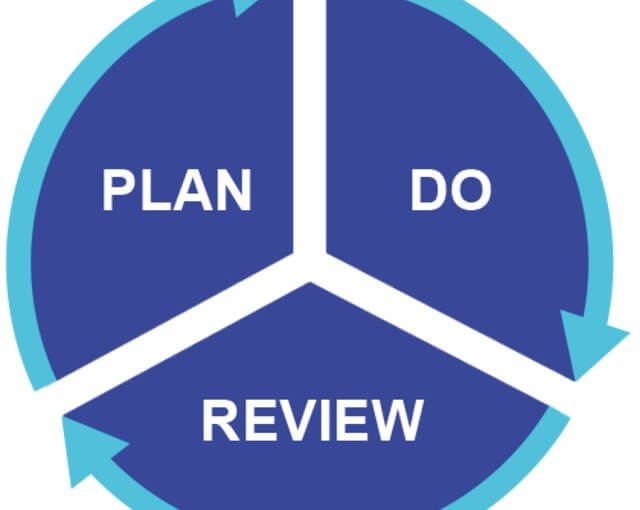PROSPRA Activity Arranger is a simple 7-step problem solving technique. That is especially useful for 2 types of problem:
- Where do I start to solve this problem?
- How can I improve this job?
It is best used for small projects (projectlets), or recurring procedures, that do not warrant full-scale project management software. Because Gantt charts and PERT networks are great when you need them. But they can get in the way on smaller projects.
The 7 steps usually form cycles of continuous growth. Though PROSPRA can also be used for one-off projects. The steps ensure that all important issues are included in your project. This comprehensive approach ensures that vital foundation steps do not get missed. Yet, PROSPRA is flexible enough to allow steps to be combined for faster project completion.
You gain best results from PROSPRA when you use it daily for a variety different tasks and projects. With daily use, the process becomes automatic and easy to adapt to any situation. As this is a practical tool, I explain it with lots of practical examples. From those examples, you can see fundamental processes that affect all projects. The 7 PROSPRA steps are:
- P: Purpose
- Purpose is fundamental, but often forgotten. If you start projects without a clear idea of why you are doing them, they will fail.
- R: Restrictions
- Will available resources restrict our purpose. Do any specific Requirements apply? What are our expected, measurable results?
- O: Objective
- For each expected result, what approach will we take to achieve it? Often there is only one approach. In which case this step takes no time at all. But it is important to consider all possible approaches. To avoid getting stuck in a rut.
- S: Strategy
- A series of clearly defined tasks that need to be achieved. A blueprint. For simple problems this might just be a question.
- P: Production
- Do the blueprint. Or answer the question(s).
- R: Results
- Measure actual results and compare to expected results from the second step. Results are factual.
- A: Appreciation
- Are there new opportunities to exploit? Does the difference between expected and actual mean we need to improve plans or production methods? What do the results mean in context of the Purpose?
Note that many projects benefit from changing the names of each step slightly. Though that destroys the PROSPRA mnemonic, it ensures that people who are unfamiliar with PROSPRA techniques can immediately see how projects flow. In fact, I see this as a positive benefit of my PROSPRA technique. Because I can create unique mnemonics to emphasize the steps needed. While adapting the name of the steps to suit the situation. You will see how this works as I introduce practical templates for typical situations. So to get notified when I publish new templates, please subscribe:
Applying PROSPRA Techniques

Planning Steps
We must always start with Purpose. Then Restrictions, Objectives and Strategy form a planning cycle that must lead to an actionable plan. So the individual steps represent extra levels of detail. But people who hate planning can combine the three stages in one simple sentence – “We’ll see how it goes.” Because if we achieve great results we can move on to new projects. Otherwise, return to this planning phase. Then use your experience to create a more detailed plan.
Doing Steps
Production and Results stages usually work hand-in-glove. I usually manage these steps separately, though some projects demand they are combined.
Not Finished Yet Step
Appreciate should always be a separate final review to see where we can improve. Sometimes we just improve Results. Other times we go back to redefine Purpose for the next phase. Usually, it is somewhere between. But always review. Then you’re certain you’re being the best you can be.
To learn more about the current status of this PROSPRA website project, see About PROSPRA.
